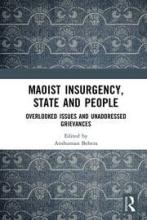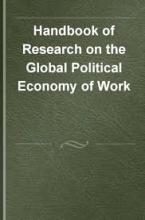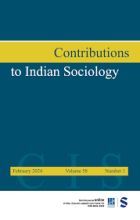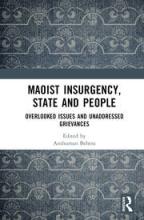Publications

|
Anant Kamath, Narendar Pani, Ajit Kumar Babu Anant Kamath is ASSISTANT PROFESSOR; Narendar Pani is JRD TATA CHAIR VISITING PROFESSOR, Inequality and Human Development Programme Inequality and Intervention: Experience of Technology NIAS Research Report NIAS/SSc/IHD/U/RR/07/2024 |

|
Anant Kamath ASSISTANT PROFESSOR, Inequality and Human Development Programme Turbulent transformations and urban undesirables https://www.taylorfrancis.com/chapters/edit/10.4324/9781003384816-9/turbulent-transformations-urban-undesirables-neethi-anant-kamath?context=ubx Neethi, P., & Kamath, A. (2025). Turbulent transformations and urban undesirables: Revanchist urban transition and street-based sex work in Bangalore. In Mapping Legalities (pp. 141-158). Routledge. |

|
Debosree Banerjee Understanding Maoism in India with Socio-Economic Discriminations and Rebel Capabilities https://www.taylorfrancis.com/chapters/edit/10.4324/9781003461975-11/understanding-maoism-india-socio-economic-discriminations-rebel-capabilities-deb… In Anshuman Behera (Ed) Maoist Insurgency, State and People: Overlooked Issues and Unaddressed Grievances. London. Routledge. |

|
Mythili Ramchand Learning without Burden: Where are We a Quarter Century after the Yash Pal Committee Report https://www.routledge.com/Learning-without-Burden-Where-are-We-a-Quarter-Century-after-the-Yash-Pal-Committee-Report/Ramchand-Khunyakari-Bose/p/book/… Ramchand, M., Khunyakari, R., & Bose, A. (Eds.). (2023). Learning Without Burden: Where are We a Quarter Century After the Yash Pal Committee Report. Routledge,Taylor & Francis. |

|
Jeebanlata Salam Vocationalisation of School Education: Prospects and Challenges (NIAS/SSc/ED/U/RR/18/2023) https://cms.nias.res.in/sites/default/filesefs/2025-01/Vocationalisation%20of%20School%20Education%20Prospects%20%26%20Challenges.pdf Report. NIAS, Bengaluru. The paper is a comprehensive policy review with a focus on secondary school education in India. The study provides the status of provisioning of vocational education at the school level, the success models in Indian states implementing this provision, the history and summaries of various policy trajectories culminating with the Prime Minister’s National Council on Skill Development. The paper then highlights a comparative analysis of vocational education systems in South Asian countries, global trends, best practices, successful models from industrialised nations and concludes by offering suggestive models based on best practices in the specific context of India. |

|
Supriya RoyChowdhury The political economy of labor informality in India: trends, theories, and politics https://ideas.repec.org/h/elg/eechap/19739_49.html in: Maurizio Atzeni & Dario Azzellini & Alessandra Mezzadri & Phoebe Moore & Ursula Apitzsch (ed.), Handbook of Research on the Global Political Economy of Work, chapter 49, pages 581-590, Edward Elgar Publishing. |

|
Anant Kamath ASSISTANT PROFESSOR, Inequality and Human Development Programme Book Review of Mapping Scientific Method: Disciplinary Narrations https://journals.sagepub.com/doi/10.1177/00699659231209662 Kamath, A. (2023). Book review: Gita Chadha and Renny Thomas, ed. 2023. Mapping Scientific Method: Disciplinary Narrations. Contributions to Indian Sociology, 57(1-2), 147-149. |

|
Aleena Sebastian Women and the invisible gender terrain of armed resistance in India https://www.routledge.com/Maoist-Insurgency-State-and-People-Overlooked-Issues-and-Unaddressed-Grievances/Behera/p/book/9781032454252 In: Maoist Insurgency, State and People: Overlooked Issues and Unaddressed Grievances (Edited by Anshuman Behera ). Routledge. ISBN 9781032454252 The gender dimension of armed conflict is marginal in the scholarship on Peace, Conflict, and Security Studies and requires further engagement through a feminist lens. It disrupts the notion that participation in these movements helps women escape patriarchy, and raises questions about the ‘ambivalent emancipation’ in India’s ‘Red Corridors.’ Through a historical and contextual reading of various resistance movements in South India and West Bengal, this paper explores how women navigate and negotiate varied socio-cultural and gender norms around women’s participation in the conflict. This reading is beyond the notion of women in conflict as passive participants or victims. |
